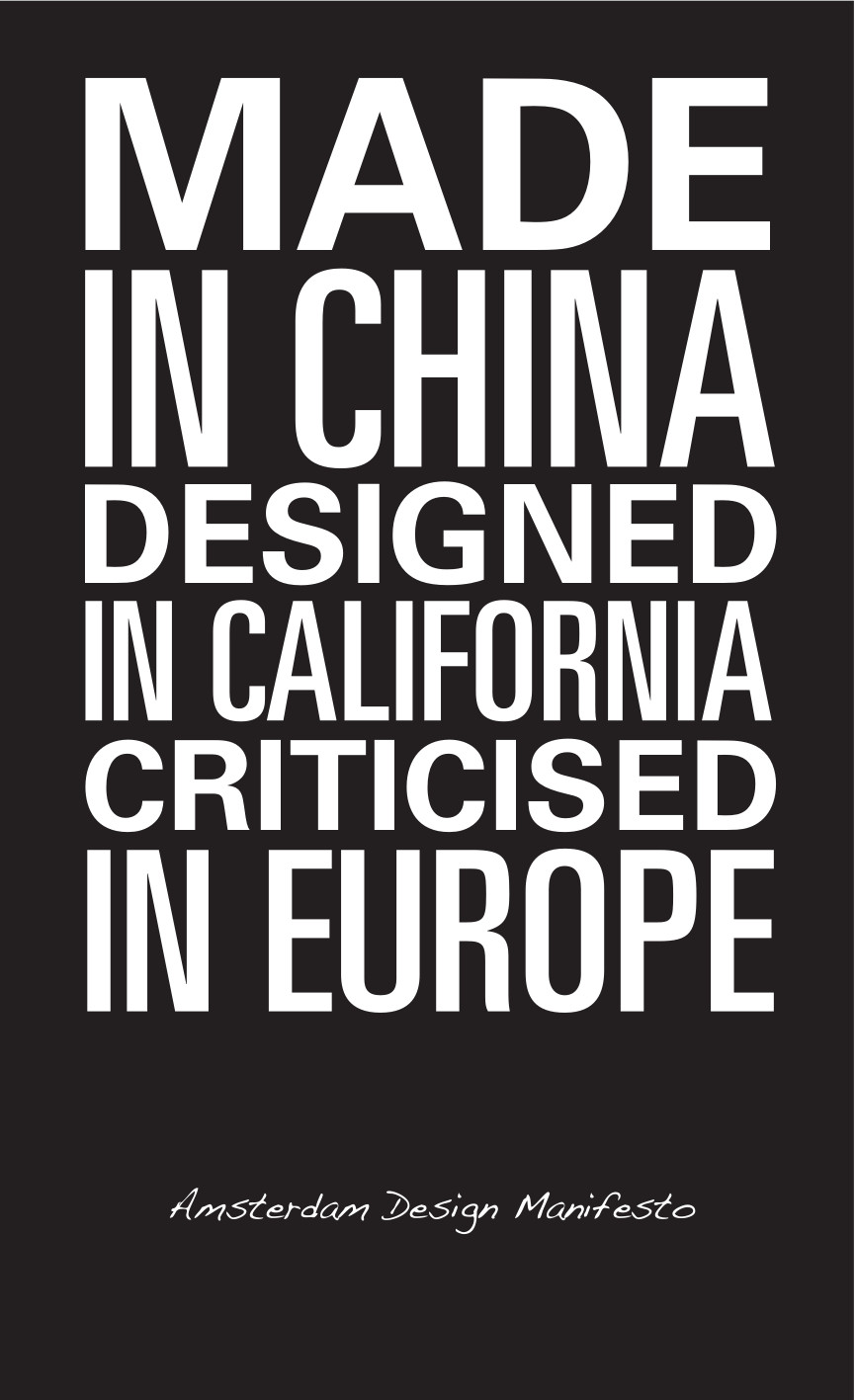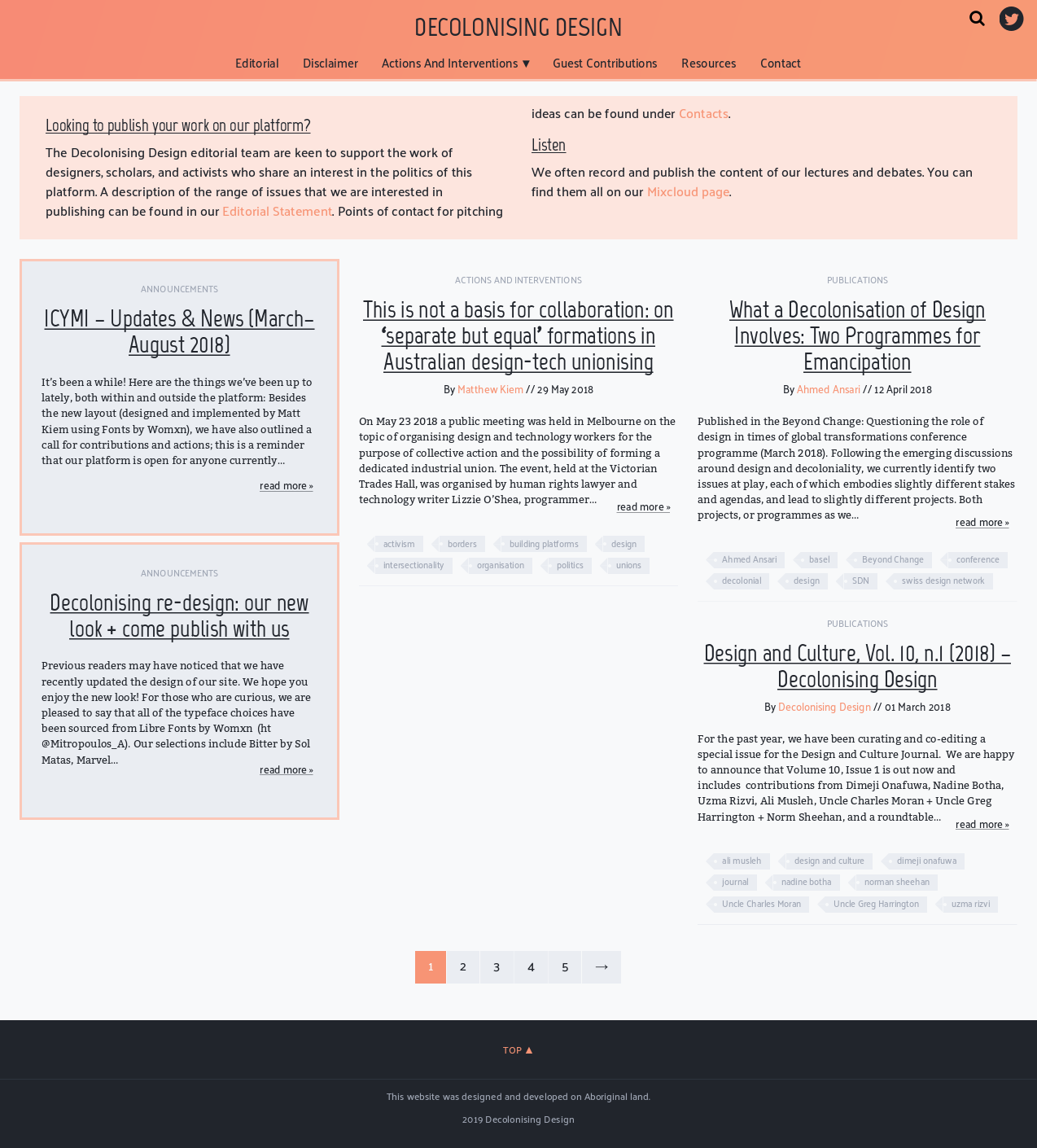Mieke Gerritzen, Geert Lovink: Amsterdam Design Manifesto (2019)
Filed under book | Tags: · creativity, critique, design

“When everything is destined to be designed, design disappears into the everyday. We simply don’t see it anymore because it’s everywhere. This is the vanishing act of design. At this moment design registers its redundancy: our products, environments and services have been comprehensively improved. Everything has been designed to perfection and is under a permanent upgrade regime. Within such a paradigm, design is enmeshed with the capitalist logic of reproduction. But this does not come without conflicts, struggles and tensions. Chief among these is the situation of design in a planetary procession toward decay. Our dispense culture prompts a yearning for longevity. The computational compulsion to delete brings alive a desire to retrieve objects, ideas and experiences that refuse obsolescence. Society is growing more aware of sustainability and alert to the depletion of this world. For the ambitious designer, it’s time to take the next step: designing the future as a collective relation attuned to life.”
Publisher The Image Society, Amsterdam, 2019
ISBN 9789082634600
79 pages
Decolonising Design (2016–)
Filed under online resource | Tags: · decolonization, design, gender, politics, postcolonialism, race

“Our objective—as design scholars and practitioners—is to transform the very terms of present day design studies and research. Designers can put to task their skills, techniques, and mentalities to designing futures aimed at advancing ecological, social, and technological conditions where multiple worlds and knowledges, involving both humans and nonhumans, can flourish in mutually enhancing ways. For us, decolonisation is not simply one more option or approach among others within design discourse. Rather, it is a fundamental imperative to which all design endeavors must be oriented.
It is with the aim of providing an outlet for voices from the fringes, the voices of the marginal and the suppressed in design discourse, that we have opened this platform. We welcome all of those who work silently and surely on the edges and outskirts of the discipline to join and contribute to conversations that question and critique the politics of design practice today, where we can discuss strategies and tactics through which to engage with more mainstream discourse, and where we can collectively experiment with alternatives and reformulations of contemporary practice.” (from the Editorial)
Edited by Ahmed Ansari, Danah Abdulla, Ece Canli, Mahmoud Keshavarz, Matthew Kiem, Pedro Oliveira, Luiza Prado, Tristan Schultz, a.o.
HTML
A Manifesto for Decolonising Design (2019; Editorial, 2016/2017, HTML)
Design & Culture 10(1): Decolonizing Design (special issue of journal, 2018)
Matthew Plummer-Fernandez: The Art of Bots: A Practice-based Study of the Multiplicity, Entanglements and Figuration of Sociocomputational Assemblages (2018)
Filed under thesis | Tags: · algorithm, art, assemblage, bots, design, software, software art

“This thesis examines and analyses an emerging art practice known as artbots. Artbots are internet-based software applications that are imbued with character and configured to engage and entertain online audiences. This form of practice, and the community of practice leading it, was found to be underrepresented and misunderstood. I argue that this artform is original and warrants a more thorough understanding. This thesis develops a conceptual framework for understanding artbots that focuses on and enables questioning around pertinent aspects of the practice.
A wide range of literature was reviewed to provide theoretical underpinnings towards this framework, including literature on algorithm studies, science and technology studies, and software architecture. The devised framework examines artbot case studies through the notions of multiplicity, entanglement, and figuration, having understood artbots as heterogenous sociocomputational assemblages comprised of software components and human intraactivity.
The research followed a varied methodology that encompassed participant observation and my own practice-based experiments in producing artbots. The study resulted in several original works. In addition, a showcase titled Art of Bots brought together key proponents and artbots, further providing material that is analysed in this thesis. The study helped identify and discuss artbots with attention to how they utilise modular software components in novel arrangements, how normative human and nonhuman relations of interaction are being eschewed in favour of entangled interrelations, and how artbots challenge common narratives dictating technological constructs by inventing unique characters and figurations.”
Doctoral thesis
Publisher Goldsmiths, University of London, 2018
Creative Commons BY-NC-ND License
218 pages
PDF, PDF (10 MB)
ZIP (Supplemental material, 20 GB)

